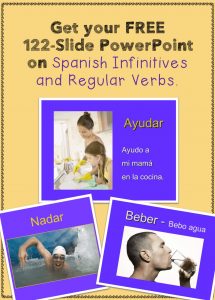How to Plan a Great Closure Activity
Finally! Here is the World Language Lesson Plan Check List I’ve been promising you. Click HERE to access it. Then, we’ll talk about how to plan a great closure activity.

This is the eighth in a series on how to write effective world language lesson plans. In case you missed the previous seven posts, here they are:
- How to Write Effective World Lesson Plans, Simplified
- The Importance of Tension in Your Lesson
- The Hook / Attention-Getter
- How to Choose Resources and Strategies
- How to Check for Understanding
- How to Choose the Best Comprehensible Input
- How to Choose Effective Practice Activities
We’ve written our learning goal, inserted tension into the lesson, hooked students in with an attention-getter, chosen our resources and strategies, taught our lesson, checked for understanding, provided comprehensible input, assigned guided practice and now….
The envelope, please. We’re ready for students to demonstrate their proficiency. And to evaluate the effectiveness of our plan. Gulp. We do that with the closure activity.
HOW TO PLAN A GREAT CLOSURE ACTIVITY FOR WORLD LANGUAGE
Here are the most important elements of a successful closure activity:
- It is directly tied to the learning target allowing students to demonstrate their proficiency and/or knowledge of the goal
- It includes ALL students
- It is geared toward proficiency
- It is fun (OK, not necessary, but a bonus)
So, ALL students present. OR, ALL students are engaged in an activity during the presentations. For example, students could fill out a handout, writing in the main events, summarizing the presentation, or counting how many times the presenters use the imperfect vs. the preterite.
This component of the closure activity is vital. I eliminate any activity that excludes students or has them passively sitting in their desks. Therefore, that hilarious activity in which three students sit in front of the class while several students ask them questions (and others gaze out the window) is not an option.
Choose the activities that engage ALL students. During presentations, make sure the observers have a responsibility as well.
How to Plan a Great Closure Activity
IT IS GEARED TOWARD PROFICIENCY
If the learning target is, “Students will write about what they like to do,” which activity would be more proficiency based?
- Students fill in missing conjugated and infinitive verbs / indirect object pronouns
- Students write a paragraph about what they like to do.
Obviously, #2 is real communication while #1 is not.
How to Plan a Great Closure Activity
IT IS FUN
One of the main closure activities is the assessment, which, often, is NOT fun. But it doesn’t always have to be dull.
While the idea of what is considered FUN is subjective, some activities are more enjoyable than others. I keep a list of fun activities, so I don’t bore my students with the same-old games.
HERE ARE A FEW OF THE CLOSURE ACTIVITIES IN MY TEACHER-TOOL BOX
- Throw the ball in the box/hoop game
- A/B competition (Assign numbers to each side, say the question, call the number)
- Kahoot (If you can make it proficiency-based)
- Pictionary (Teacher reads complete sentences while students draw.)
- Bingo (Teacher reads complete sentences while students draw.)
- Essay writing with template
- Paired oral presentation
- Paired Summary: In pairs, tell your partner what you’ve learned, then present to the class
- Story Ending: Write your own ending to the story in pairs
- Story Rewrite: Rewrite the story from the perspective of one of the characters
- Dramatization: Students act out sentence you say / Students write the sentences the teacher is acting out
- Group Activity: Students take turns asking and answering questions
- Song: Students present a song in pairs, acting out the meaning
- Girls against boys (Number them off)
- Paired activities: Ask, answer, record answers
- Eight Stations Activity: Set up stations in the room with one person at each station who asks questions.
- Narration and Presentation: Students write a story, then narrate it and act it out
It is important to note that the closure activity does not have to take place the same day as the direct instruction (if by closure you are referring to student demonstration of the learning target). In many cases, that is impossible as more time is needed for students to practice.
Now that you know how to plan a great closure activity, reflect on what you might add to the list. I’d love to hear your ideas. What activities do you use for closure?
Don’t forget to grab your World Language Lesson Plan Check List to make sure you don’t forget any vital components of a successful lesson!
If you would like to receive more freebies and teaching tips in your email, subscribe HERE (Make sure to scroll down).
Next time we will discuss ways to fulfill the National World Language Standard, “Communities”. By doing so, we will explore how students use the language outside the classroom. Stay tuned!


